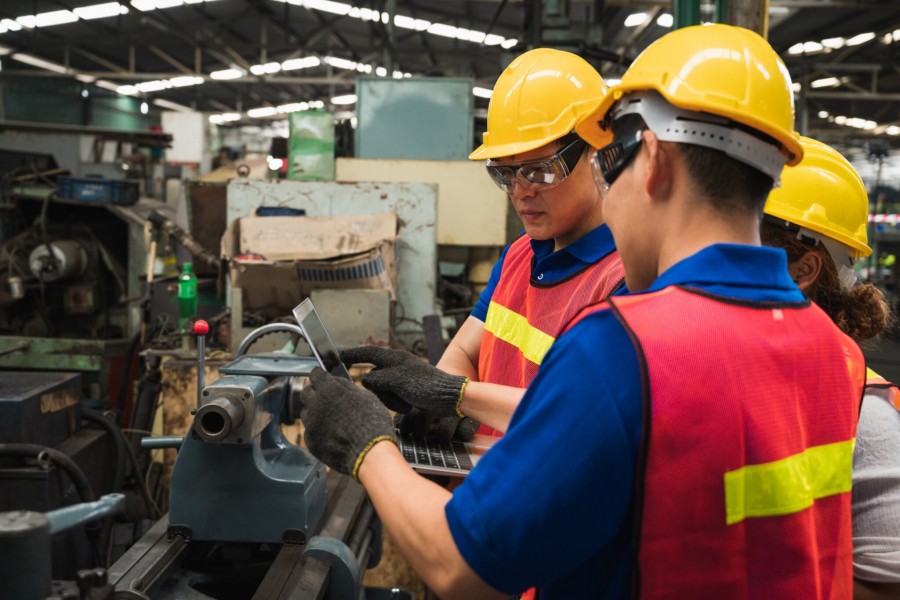Asia-Pacific labour markets have recorded a partial rebound from the impacts of COVID-19, yet full recovery in the region remains elusive with conditions expected to remain difficult into 2023.
According to the 'Asia-Pacific Employment and Social Outlook 2022: Rethinking sectoral strategies for a human-centred future of work', employment numbers in the region in 2022 were 2.0 per cent above the pre-crisis level of 2019, recovering from the loss of over 57 million jobs in 2020.
"Still, the recovery is not complete," reads the report published on Monday.
The region still lacks 22 million jobs in 2022, a jobs gap of 1.1 per cent compared to what if the pandemic had not occurred. This number is projected to increase to 26 million (1.4 per cent) in 2023 given the headwinds to growth in the current geopolitical global and regional context.
The employment losses (2019-21) in the manufacturing sector affected 15 countries especially high in Mongolia (7.7 per cent), the Philippines (7.0 per cent), Macau, China (6.0 per cent), Maldives (5.6 per cent), India (5.5 per cent) and Indonesia (4.8 per cent).
On the other hand, manufacturing employment experienced sizable increases in certain South-East Asian countries (Cambodia, Lao PDR, Malaysia, Timor-Leste and Vietnam), in the Pacific (Australia, Papua New Guinea, Samoa, Solomon Islands, Tonga and Vanuatu) and in Bangladesh, Nepal and Pakistan in South Asia.
Manufacturing employment in Bangladesh increased by around 4.5 per cent, according to the report. In Bangladesh, the manufacturing sector accounts for 15 per cent of the total industrial sector employment.
Labour productivity, measured as value added per worker, has been on the rise over the past two decades in the Asia-Pacific region, with an average annual growth rate of 3.8 per cent in the 2000-20 period.
"Agriculture had the strongest gains in labour productivity, increasing by 5.6 per cent on average per year, with the continued adoption of farm machinery in such countries as Bangladesh, Philippines and Thailand being one of the likely drivers," it said.
At the same time, total working hours in the region remained below those of 2019 while the regional unemployment rate in 2022 was 5.2 per cent, an increase of 0.5 percentage points from 2019.
By 2022, all sub regions had regained the employment losses of 2020 and were showing positive employment growth over 2019. However, employment growth did not keep pace with population growth. Only in the Pacific was the employment-to-population ratio in 2022 above that of 2019.
"Although Asia-Pacific employment trends look positive, the region's labour market is not yet back on its pre-crisis track with numerous additional challenges casting shadows on future growth prospects. It is vital that we bring inclusive and human-centred growth back to the region and not settle for a 'quasi' recovery based on informal and poor-quality jobs," said Ms Chihoko Asada Miyakawa, ILO Assistant Director General and Regional Director for Asia and the Pacific.
The report makes a first-time assessment of regional sectoral estimates over a three-decade period from 1991-2021 to highlight which sectors are growing as sources of jobs, which are shrinking and which harbour opportunities for "decent work".
It reveals that while IT and information services is the region's fastest growing sector in terms of employment growth, only 9.4 million persons worked in the sector in 2021, corresponding to just 0.5 per cent of total employment.
By contrast, the three largest sectors in terms of employment in the Asia-Pacific region: agriculture, forestry and fishing; manufacturing; and wholesale and retail trade together accounted for 1.1 billion workers in 2021, or 60 per cent of the region's 1.9 billion workforce.
The sectors where workers are concentrated are typically characterised by limited labour productivity, low wages, poor working conditions and low job and income security.
Most workers in these sectors lack social protection while a high degree of informality also exists, with any gains made in recent decades largely wiped out by the pandemic.
Gender inequality remains rife with all but one of the top 10 high employment growth sectors benefiting men workers over women.


